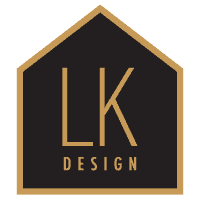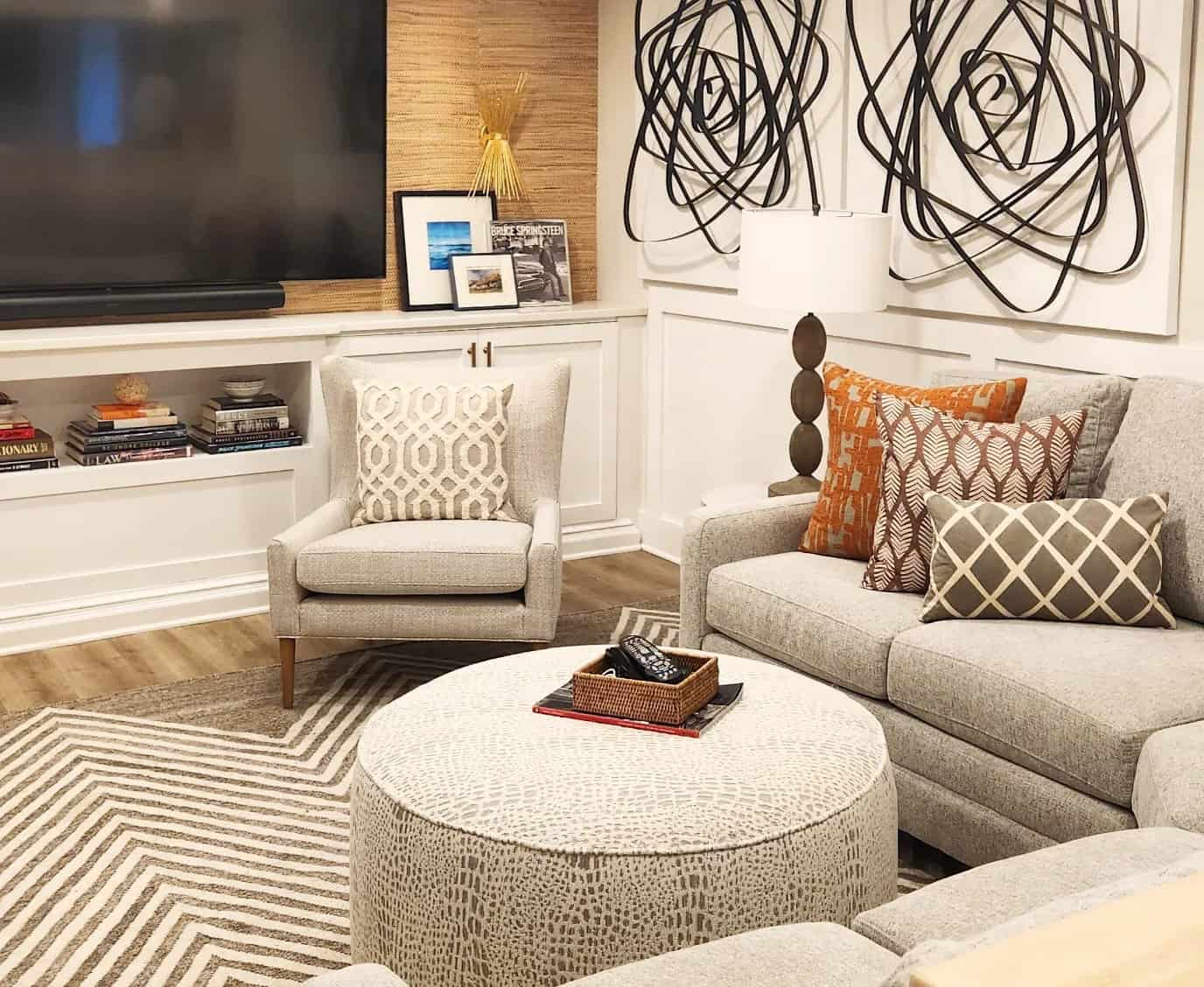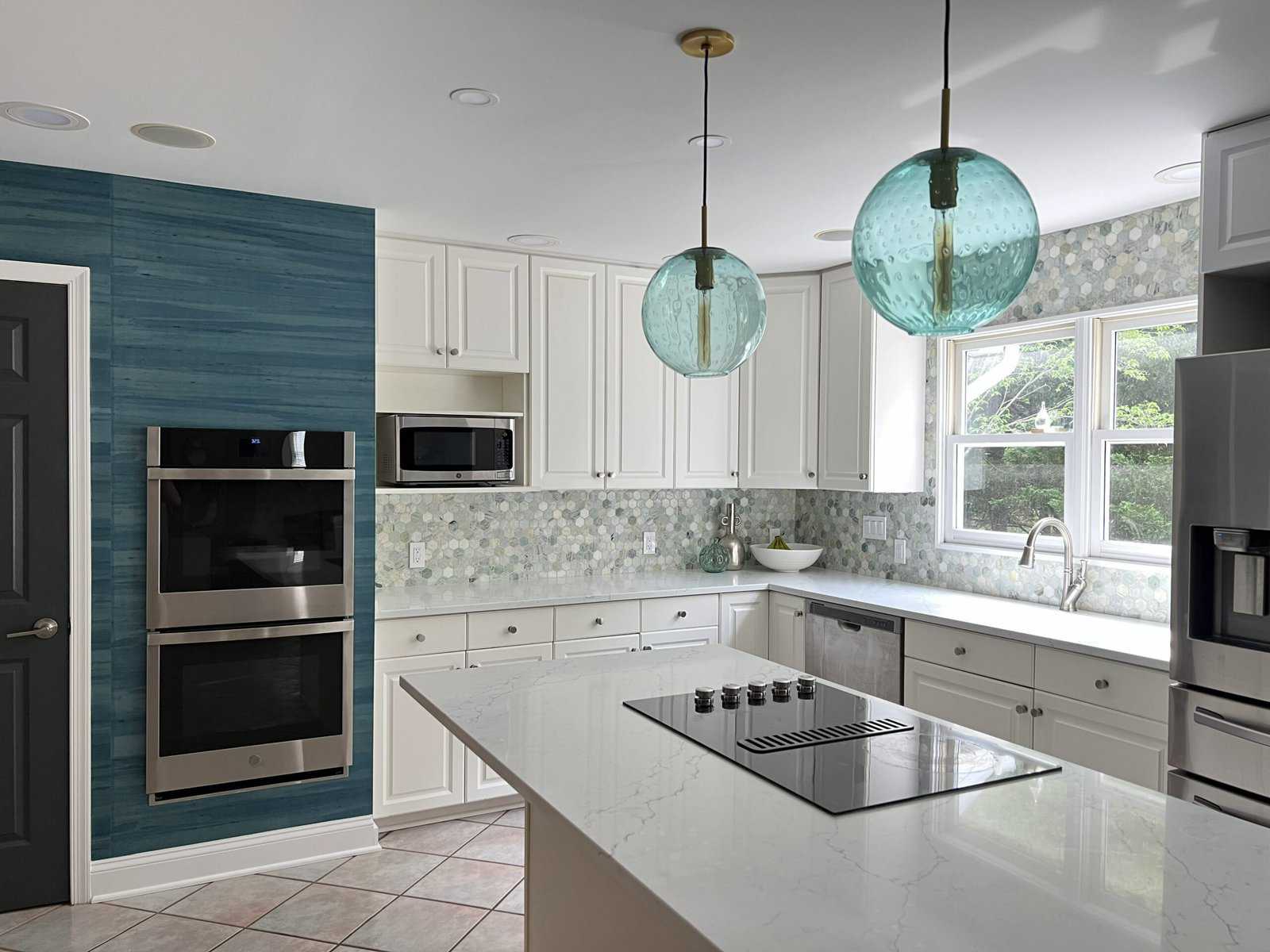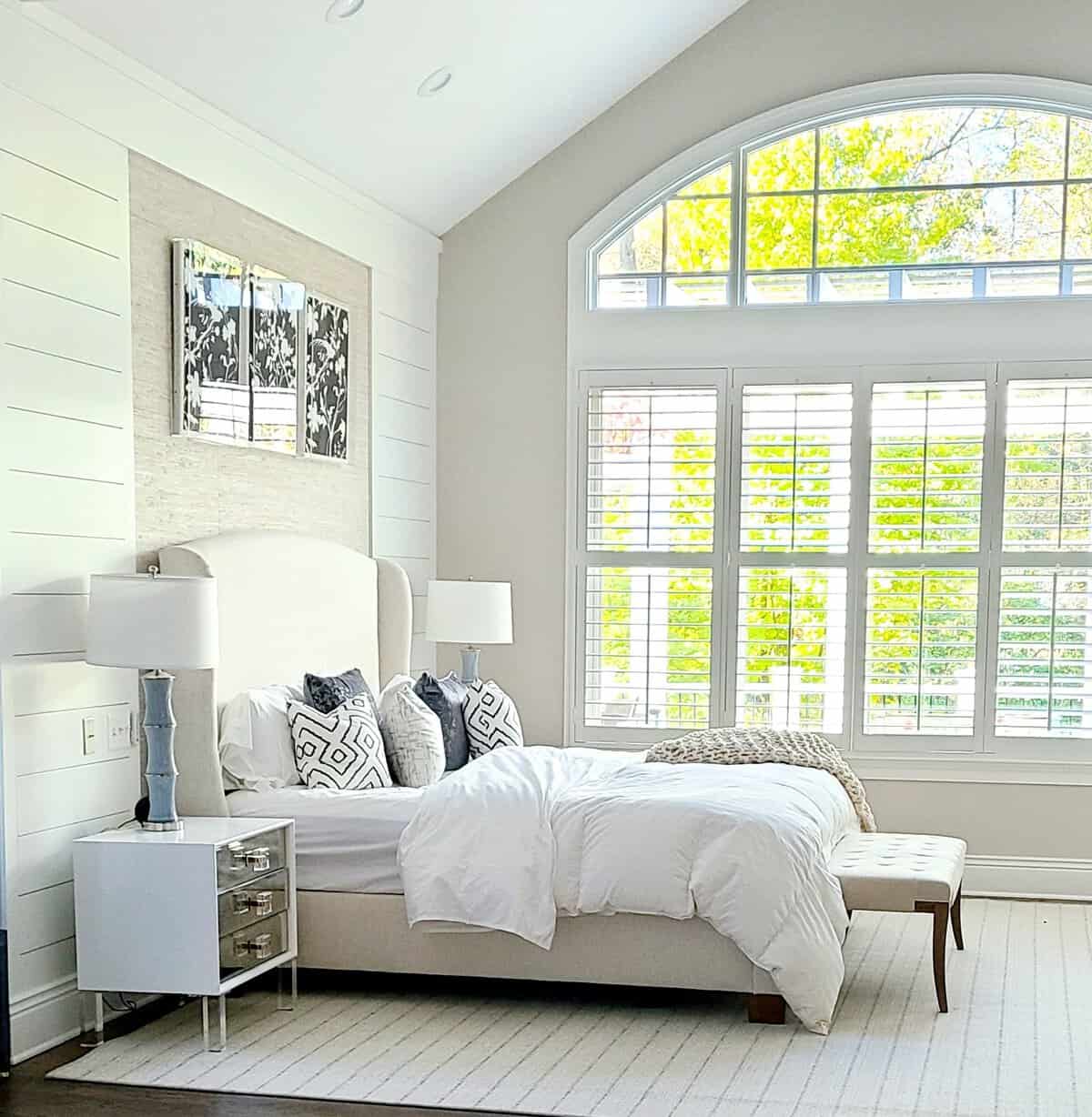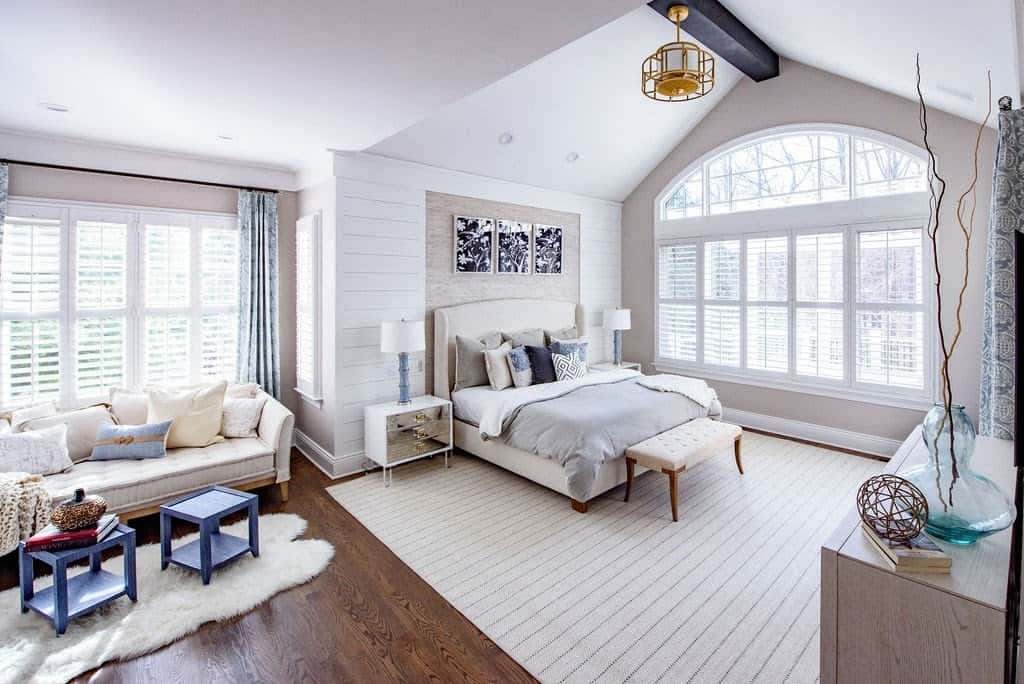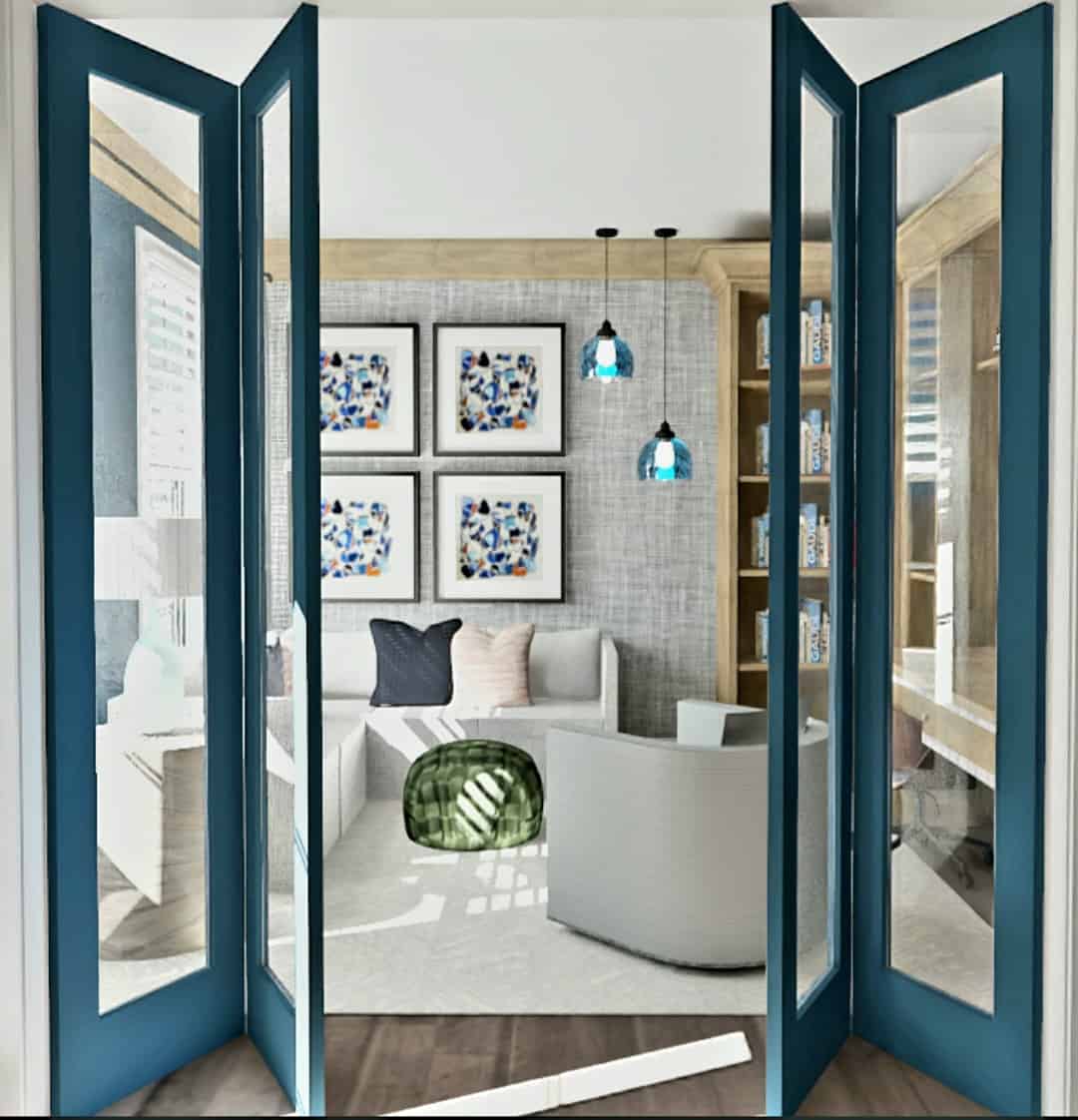Modern basement remodeling has emerged as an innovative fusion of functionality and aesthetics. With the professional touch of interior design expertise, these often underused spaces transform into dynamic living environments that not only elevate the property’s value but also serve as personalized havens. Guided by an in-depth understanding of design principles, construction codes, and architectural subtleties, industry experts craft tailored solutions that encapsulate the homeowner’s unique lifestyle and preferences. Beyond mere utility, this process breathes life and character into every project, affirming the immense potential of basement spaces. The journey of modern basement remodeling, therefore, epitomizes the synergy of creativity, expertise, and strategic value enhancement.
Key Takeaways
- Understanding different modern basement styles can help homeowners choose a design that aligns with their personal style and functional requirements.
- Hiring a professional interior designer for a basement remodel can optimize space utilization, enhance aesthetic appeal, and ensure compliance with codes and regulations.
- Space planning is crucial in basement design as it helps create a harmonious and efficient layout, taking into account structural elements and creating multi-functional areas.
- Lighting techniques, such as task lighting, ambient lighting, and accent lighting, play a vital role in basement spaces, contributing to functionality and overall mood.
Understanding Modern Basement Styles
Utilizing modern design principles, understanding the various styles of basement remodeling becomes essential in achieving a functional yet aesthetically pleasing space. Emerging trends in basement design incorporate a blend of contemporary aesthetics with a focus on optimal usage of space. These designs aim to transform basements from mere storage locales to versatile spaces that serve a multitude of functions.
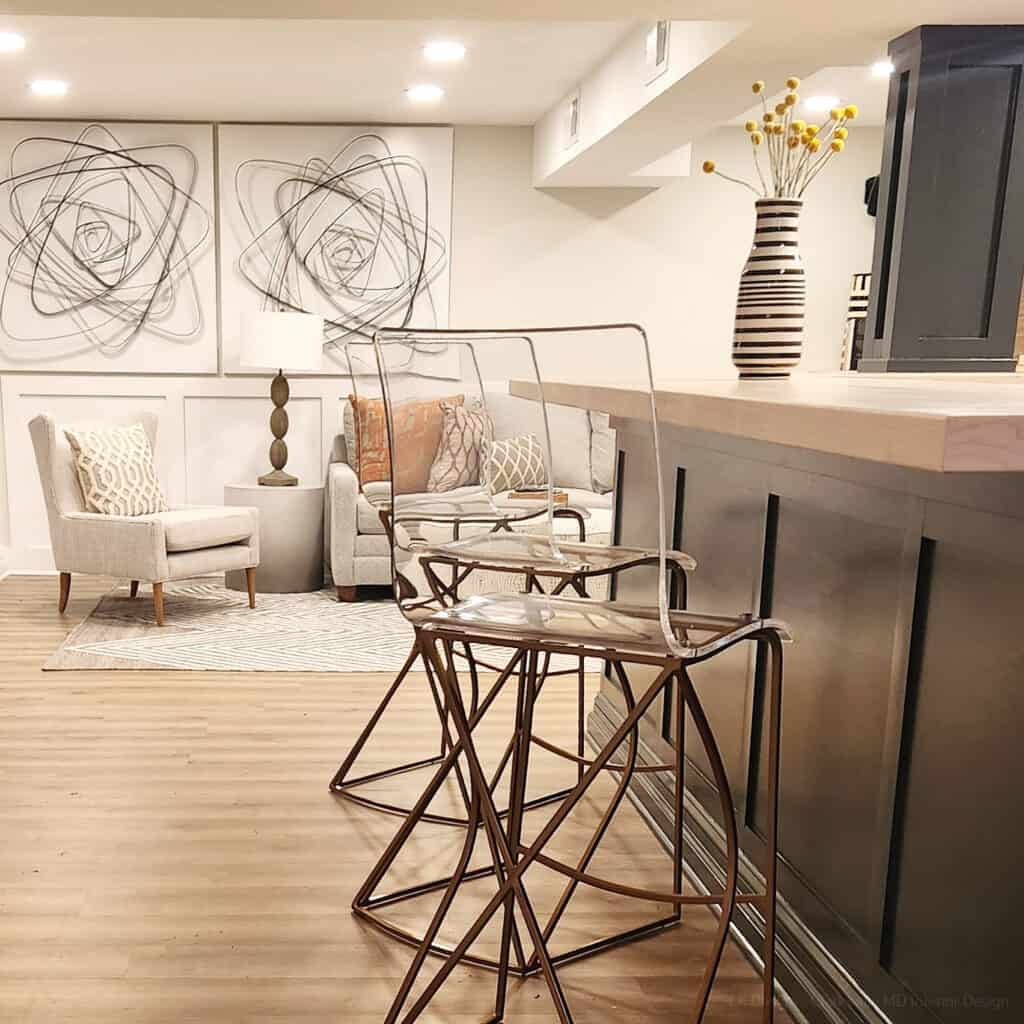
In the realm of modern design, minimalism reigns supreme. This style is characterized by clean lines, muted color palettes, and a lack of clutter. It exudes an air of simplicity without compromising on functionality. Another prevalent style is the industrial design, which leverages raw materials such as exposed brick or metalwork to create an urban, loft-style ambiance.
Rustic design, with its focus on natural elements like wood and stone, is another popular option, bestowing a warm, welcoming feel to the basement.
Alternatively, some homeowners prefer a more traditional style, creating a classic, timeless space that seamlessly blends with the rest of the home. Understanding these styles is the first step towards crafting a basement remodel that aligns with your personal style and functional requirements, transforming it into a space of beauty and utility.
Benefits of Professional Interior Design
Professional interior design expertise enhances the functional and aesthetic potential of a basement remodeling project. The benefits of employing professional input are manifold, but for the purposes of this discussion, we will focus on three central ones.
- Optimized Space Utilization: Professional designers are adept at utilizing space efficiently. They can transform your basement into a functional space that caters to your needs, be it a home office, a recreational area, or even a guest suite.
- Aesthetic Appeal: Interior designers possess a keen eye for aesthetics. They can seamlessly blend colors, textures, and lighting to create an aesthetically pleasing atmosphere that enhances the overall value of your home.
- Adherence to Codes and Regulations: Professional designers are well-versed in local building codes and regulations. This ensures your basement remodel meets all safety and legal requirements, saving you potential fines and headaches down the line.
The Importance of Space Planning in Basement Design
Space planning emerges as an integral component in the basement design process, bridging the gap between functional requirements and aesthetic appeal. It establishes the framework for a harmonious and efficient layout that maximizes the usability of the basement space. Without proper space planning, even the most extravagant designs can fall short in terms of functionality and comfort.
For basements, space planning takes on a heightened level of importance due to their unique construction and location. These areas often have structural elements such as pillars, low ceilings, or utility rooms that need to be incorporated into the design. Thus, careful planning allows designers to work around these elements, transforming potential hindrances into unique design features.
Furthermore, effective space planning allows for the creation of multi-functional areas within the basement, increasing its overall utility. It can accommodate a range of activities, from home theaters and gyms to offices and guest rooms, based on the homeowners’ unique needs and preferences.
In essence, space planning is the cornerstone of basement design, shaping its functionality, aesthetics, and overall value. With expert knowledge and a detail-oriented approach, it aids in transforming basements into well-planned, aesthetically pleasing, and versatile living spaces.
Lighting Techniques for Basement Spaces
Proper illumination can transform a dim, dreary basement into an inviting, multipurpose area. There are three main lighting techniques to consider for basement remodeling:
- Task Lighting: This is critical for areas where specific activities take place, such as reading, crafts, or home office setups. Desk lamps, under-cabinet lights, or pendant lights can provide the focused illumination necessary for these tasks.
- Ambient Lighting: This provides overall illumination, setting the mood for the entire space. Recessed lighting, wall sconces, or chandeliers can be used to create a warm, inviting environment.
- Accent Lighting: This is used to highlight architectural features, artwork, or other points of interest. Track lights, picture lights, or wall-mounted fixtures can draw attention to these elements.
Each technique serves a distinct purpose and when employed in harmony, they can create a well-lit, aesthetically pleasing basement. The choice of lighting should be dictated by the function of the space, the homeowner’s personal style, and the overall design scheme. With careful planning and expert interior design input, a basement can be transformed from an under-utilized storage area into a stylish, functional living space.
Selecting Color Schemes for Basements
The homeowner’s selection of color schemes significantly influences the overall aesthetic and feel of a basement during the remodeling process. This choice is not merely about personal preference; it is a strategic decision that can create an illusion of space, enhance the room’s functionality, and affect moods.
The basement’s lack of natural light offers a unique opportunity to experiment with darker hues, which can add depth and coziness, contrary to the common misconception that dark colors make a room feel smaller. Deep blues, for example, can inspire a soothing, serene environment. Likewise, rich reds or warm browns can create a comfortable, intimate space.
For those seeking a more open, airy feel, lighter shades such as soft grays, pale yellows, or pastel blues can reflect artificial light and make the room appear more spacious. A monochromatic scheme with varying shades of the same color can also provide visual interest without overwhelming the space.
Lastly, the choice of color should complement the room’s intended purpose. For instance, a basement home office might benefit from cool, calming colors like green or blue, while a playroom might be more vibrant with bright, stimulating hues. Whichever color scheme one chooses, it should ultimately reflect the homeowner’s style and the room’s functionality.
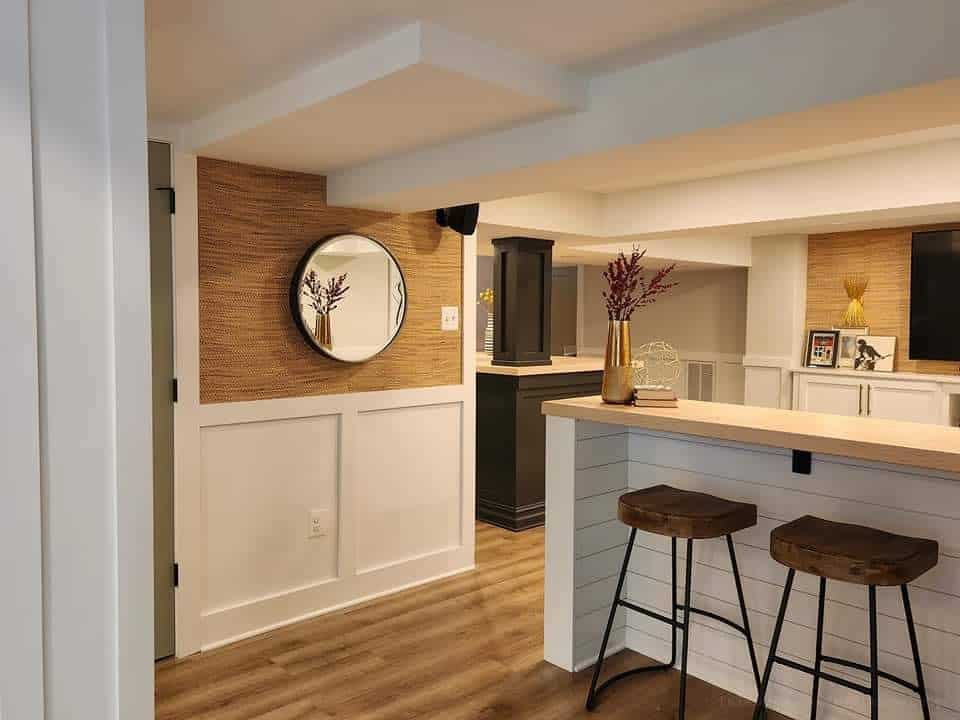
Materials and Finishes for Basement Remodeling
In modern basement remodeling, the selection of appropriate materials and finishes contributes significantly to the durability, functionality, and aesthetic appeal of the space. These choices can significantly impact the longevity, usability, and overall aesthetic appeal of your basement.
When selecting materials, consider the following:
- Durability: Choose materials that can withstand the unique conditions of a basement, such as moisture and temperature fluctuations. Concrete, vinyl, and ceramic tiles are all excellent choices for flooring.
- Functionality: The materials should align with the intended use of the basement. For instance, if you plan to use it as a home theater, acoustic panels, and dark, matte finishes may be ideal.
- Aesthetics: The materials and finishes should complement the overall design theme. For instance, a rustic theme may involve reclaimed wood, while a modern theme might call for stainless steel and glass features.
Furniture Selection and Arrangement Tips
Proper furniture selection and arrangement play a pivotal role in optimizing the functionality and aesthetics of your remodeled basement.
In selecting furniture, consider the purpose of the basement. If it’s a media room, prioritize comfortable seating like recliners, sofas, and bean bags. For a home office, ergonomic chairs and desks are essential. The furniture should resonate with the overall design theme, creating a harmonious blend between form and function.
Arrangement is equally critical. The furniture layout should facilitate smooth movement and easy accessibility. In smaller spaces, multi-functional furniture, such as ottomans with storage or sofa beds, can maximize utility without compromising on style.
Lighting plays a significant role in highlighting furniture. Use a mix of direct and ambient light to accentuate key pieces and create a pleasing visual effect.
Incorporate area rugs to delineate spaces and add warmth. They can also help to absorb sound, enhancing the overall comfort of the basement.
Maximizing Storage in Your Basement
While ensuring aesthetics and functionality in your remodeled basement, it’s crucial to maximize storage for efficient space utilization. The basement offers a wealth of potential storage space that, when designed strategically, can greatly enhance your living environment.
Here are three strategies to maximize storage:
- Utilize Vertical Space: An often overlooked area, the vertical space in your basement can serve as an excellent place for storage. Consider installing open shelving or tall cabinets that reach the ceiling. This will provide ample storage without consuming much floor space.
- Incorporate Multipurpose Furniture: Opt for furniture that serves dual functions. For instance, ottomans with storage inside or a sofa bed can provide additional space for storing items while serving their primary function.
- Designate Specific Areas: Dedicate different sections of your basement for specific storage purposes. This could include a corner for sports equipment, a section for seasonal decorations, or a space for tools.
Incorporating Technology Into Your Basement
Utilizing smart home technology, such as home automation systems, can allow you to control the environment of the basement with a simple touch of a button, adjusting lighting, temperature, and even security settings.
Expanding on this concept, consider adding a designated media area fitted with a high-definition projector and surround sound system for a cinema-like experience. This not only adds an element of entertainment but also increases the overall value of your home. Additionally, integrating Wi-Fi boosters can ensure that your basement has strong connectivity for work or leisure activities.
Incorporating green technology, such as energy-efficient heating and cooling systems, can provide significant cost savings in the long run. Furthermore, installing moisture and water sensors can help prevent potential damage, providing peace of mind.
Sustainable Practices in Modern Remodeling
Given the increasing global emphasis on sustainability, it’s imperative to consider eco-friendly solutions in your basement remodeling project. Modern remodeling practices have evolved, integrating sustainable materials and energy-efficient technologies to minimize environmental impact while enhancing the functional and aesthetic appeal of your space.
- Use of Sustainable Materials: Select materials like recycled steel, reclaimed wood, and low VOC paints that are environmentally friendly and contribute to healthier indoor air quality. These materials, while being sustainable, do not compromise on quality or style.
- Energy-Efficient Lighting and Appliances: Incorporate LED lighting and Energy Star-certified appliances. Not only do these options reduce your energy consumption, but they also cut down on monthly utility bills.
- Water Conservation Measures: Install low-flow faucets and dual-flush toilets to significantly reduce water usage.
Adopting these eco-friendly practices in your basement remodeling project is not just about being environmentally responsible. It’s about creating a healthier, more comfortable living space that’s in tune with the environment. With careful planning and the right design expertise, you can achieve a modern, sustainable basement remodel that aligns with your lifestyle and values, while also contributing to a more sustainable future.
Cost and Timeline Estimations for Remodeling
In the realm of basement remodeling, understanding the potential costs and project timeline is essential for effective planning and budget management. The cost of your project will primarily depend on the size of your basement, the materials used, labor, and the complexity of the design. On average, basement remodeling can range from $25,000 to $50,000, with high-end projects exceeding $75,000.
The timeline for completion is another critical factor. Typically, a full-scale basement remodeling project can take anywhere from 6 to 12 weeks, depending on the project’s scope. However, custom designs and unforeseen obstacles such as structural issues may extend the timeline further.
Engaging a professional interior design service with expertise in basement remodeling can help streamline the process. These experts can provide accurate cost and timeline estimates, minimizing surprises and ensuring a smooth project execution. Their detailed knowledge of materials, design trends, and local building codes can prove invaluable, transforming your basement into a functional, aesthetically pleasing space that adds value to your home. Remember, a well-planned project is more likely to stay within budget and on schedule.
Frequently Asked Questions
What Specific Services Do Interior Design Experts Provide During a Modern Basement Remodeling Project?
Interior design experts provide services such as space planning, color scheme selection, material sourcing, lighting design, and furniture arrangement during a basement remodeling project to ensure functionality and aesthetic appeal.
How Does a Professional Interior Designer Adhere to Safety Regulations During a Basement Remodeling Process?
Professional interior designers prioritize safety during basement remodeling by adhering to building codes, using materials that meet safety standards, and incorporating design elements that minimize potential hazards, ensuring a secure and stylish space.
What Are the Potential Challenges of Modern Basement Remodeling and How Do Interior Design Experts Address Them?
Potential challenges in modern basement remodeling include space optimization, moisture control, and lighting. Interior design experts overcome these through innovative layouts, moisture-resistant materials, and strategic lighting design, ensuring functionality and aesthetics coexist seamlessly.
How Do Interior Design Professionals Ensure the Durability and Longevity of the Materials Used in Basement Remodeling?
Interior design professionals ensure durability and longevity in basement remodeling by selecting high-quality, moisture-resistant materials, employing proper installation techniques, and recommending regular maintenance to preserve the integrity of the design over time.
Conclusion
Modern basement remodeling, when executed with interior design expertise, transforms previously underutilized spaces into dynamic, functional areas. These innovative projects not only enhance the homeowner’s lifestyle and preferences but also significantly increase property value. With a keen understanding of architectural nuances, construction codes, and design principles, industry professionals are able to deliver extraordinary results. Thus, the realm of modern basement remodeling is a perfect testament to the harmonious blend of creativity, expertise, and value enhancement.
